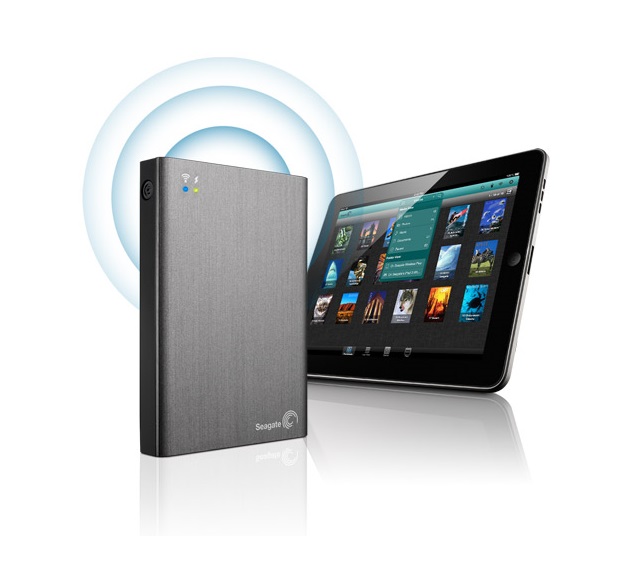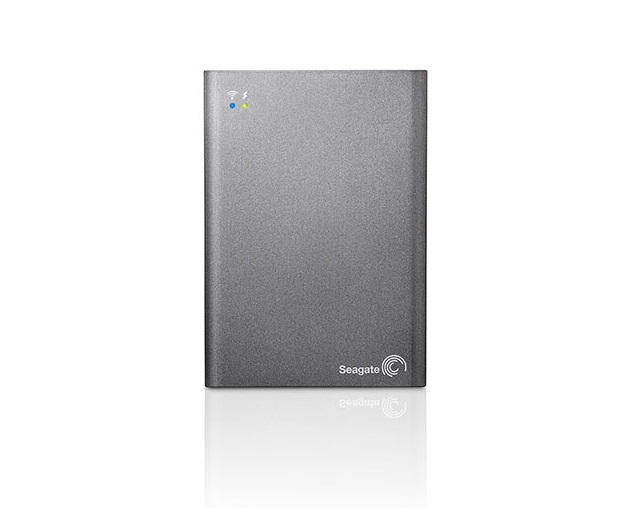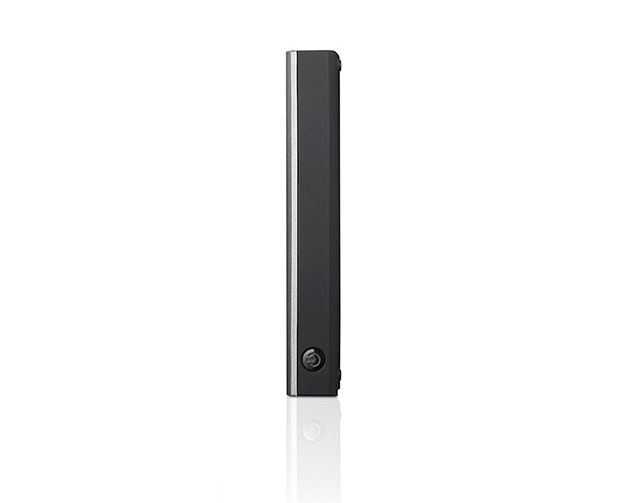Seagate Wireless Plus 1TB review
A good looking wireless drive, which is let down by performance and price.

Seagate's Wireless Plus includes effective, easy-to-use wireless access from PCs and Macs as well as a huge variety of Android and iOS smartphones and tablets, and it's easy to both access and stream media when you're on the move. However, the high price and poor USB 3 performance mean that this is only ideal for mobile media fans and frequent travelers.
-
+
Wireless; Easy to use; free Android/iOS app; looks good
-
-
Poor USB 3 speeds; 3x the price of a non-wireless drives

We're not used to seeing much innovation when it comes to mobile hard disks, but Seagate's Wireless Plus tries to stay ahead of the competition by cramming 802.11n wireless into its 20mm frame.
Wireless connectivity
Cable free connectivity is becoming increasingly useful and Seagate has worked hard to make the Wireless Plus live up to its name. Connectivity is versatile: the drive can be used wireless with PCs and Macs, as well as Android devices using at version 2.3+ and iOS hardware using version 4.3 of Apple's software.

It's easy to get started. Turn on the Seagate's wireless button and it'll appear in your PC's wireless networks menu. Once connected, access to the drive is handled through www.seagatewireless.com - it'll detect the Wireless Plus and load its browser-based interface.
From here, the Seagate's folders can be browsed and movies, documents, songs and pictures can be viewed, moved and opened. Content can be streamed from the disk to any DLNA-equipped device, and desktop formats also allow content to be uploaded from a computer to the Wireless Plus - a feature that isn't supported on the two smartphone systems.
Access on iOS and Android devices is through a free app, and the structure is broadly similar, with navigation handled through a near-identical UI. It's easy to use, intuitive, and we didn't experience any performance issues when using the Wireless Plus across any platform.
USB 3
Remove a blanker from one end of the Wireless Plus and you'll find SATA/300 and SATA power connections. Seagate includes an adapter in the box, and it turns this drive into a traditional, USB 3-powered external hard disk.
It's here where the Wireless Plus falters. The Seagate ran through CrystalDiskMark's sequential read and write benchmarks at 103MB/sec - half the speed we'd expect to see from top desktop hard disks.
The situation became worse as files became smaller. The Seagate read and wrote 512KB files at 38MB/sec and 45MB/sec, and it laboured to 4K file read and write speeds of 0.4MB/sec and 0.9MB/sec.
It's clearly not a drive built for speed, and it's easy to see why when you look under the hood. The Wireless Plus is built around a 1TB Seagate Momentus, which is a mobile drive that spins at 5,400rpm - slower than the 7,200rpm pace of desktop hard disks. It's only got 8MB of cache, too, which doesn't help matters - top desktop disks have 64MB.

Conclusion
The Wireless Plus is a well-built, good-looking drive, and its wireless connectivity and software work extremely well: it's easy to use on PC, and the free app allows for media access and streaming on a wide variety of mobile devices.
The Seagate's wired performance leaves a lot to be desired and the price is high. The hard drive costs 191, which is three times the amount you'll pay for a decent, non-wireless 1TB external disk.
That price and poor USB 3 performance means we can't give the Wireless Plus a whole-hearted recommendation. It's only worth such a high outlay if you regular consume media on your smartphone or tablet.
Verdict
Seagate's Wireless Plus includes effective, easy-to-use wireless access from PCs and Macs as well as a huge variety of Android and iOS smartphones and tablets, and it's easy to both access and stream media when you're on the move. However, the high price and poor USB 3 performance mean that this is only ideal for mobile media fans and frequent travelers.
Connectivity: 1 x USB 3, 802.11n wireless
Capacity: 1TB, 931GB usable
Dimensions: 89 x 127 x 20mm (WxDxH)
Weight: 256g
Warranty: 1yr RTB
Get the ITPro daily newsletter
Sign up today and you will receive a free copy of our Future Focus 2025 report - the leading guidance on AI, cybersecurity and other IT challenges as per 700+ senior executives
Mike Jennings has worked as a technology journalist for more than a decade and has been fascinated by computers since childhood, when he spent far too long building terrible websites. He loves desktop PCs, components, laptops and anything to do with the latest hardware.
Mike worked as a staff writer at PC Pro magazine in London for seven years, and during that time wrote for a variety of other tech titles, including Custom PC, Micro Mart and Computer Shopper. Since 2013, he’s been a freelance tech writer, and writes regularly for titles like Wired, TechRadar, Stuff, TechSpot, IT Pro, TrustedReviews and TechAdvisor. He still loves tech and covers everything from the latest business hardware and software to high-end gaming gear, and you’ll find him on plenty of sites writing reviews, features and guides on a vast range of topics.
You can email Mike at mike@mike-jennings.net, or find him on Twitter at @mikejjennings
-
 Westcon-Comstor and Vectra AI launch brace of new channel initiatives
Westcon-Comstor and Vectra AI launch brace of new channel initiativesNews Westcon-Comstor and Vectra AI have announced the launch of two new channel growth initiatives focused on the managed security service provider (MSSP) space and AWS Marketplace.
By Daniel Todd Published
-
 Third time lucky? Microsoft finally begins roll-out of controversial Recall feature
Third time lucky? Microsoft finally begins roll-out of controversial Recall featureNews The Windows Recall feature has been plagued by setbacks and backlash from security professionals
By Emma Woollacott Published
-
 The UK government wants quantum technology out of the lab and in the hands of enterprises
The UK government wants quantum technology out of the lab and in the hands of enterprisesNews The UK government has unveiled plans to invest £121 million in quantum computing projects in an effort to drive real-world applications and adoption rates.
By Emma Woollacott Published